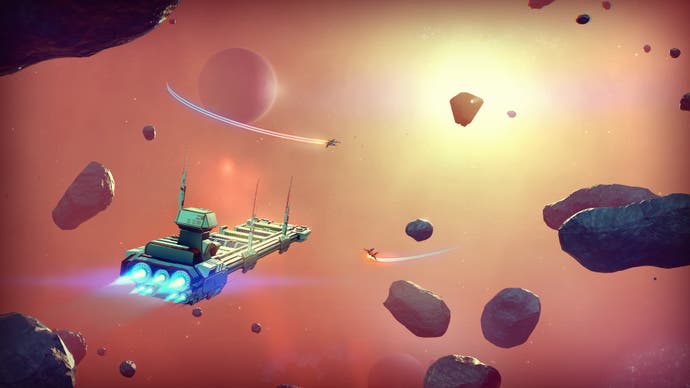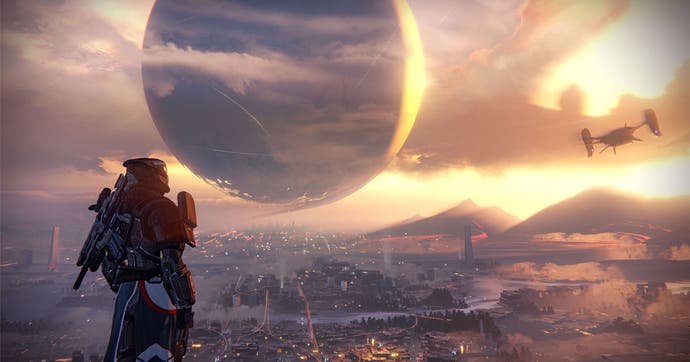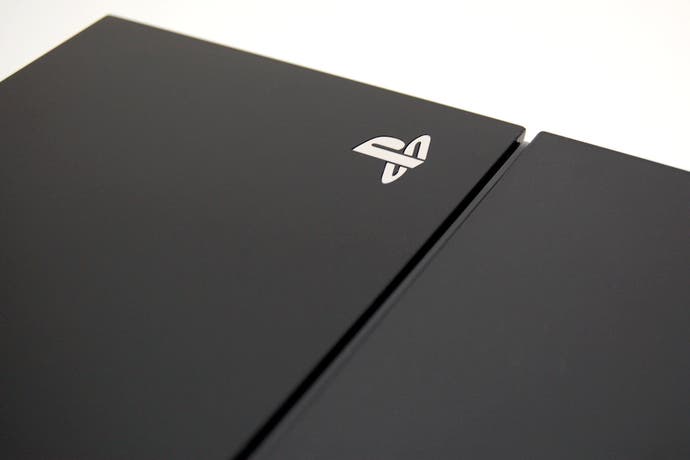Who needs games: PlayStation 4's first year
It was the console that could do no wrong - but software was another matter.
One year ago today, PlayStation 4 launched in North America. It arrived on these shores two weeks later. The build-up really couldn't have gone better for Sony; the preceding year had been one of good fortune, smart marketing, aggressive PR and rampant opportunism for PlayStation as its chief competitor, Microsoft's Xbox, had blundered from one hubristic public relations catastrophe to the next. To cap it all off, it had emerged that PS4 had a significant technical advantage, too, with faster memory and a more powerful graphics processor. Sony's executives could scarcely believe their luck; after the tough PS3 years, they had been offered an open goal.
It's a familiar narrative, but the machine's first anniversary offers an opportunity to take stock of the story since then. How well has PlayStation 4 served its users - and how well has Sony served PS4 - since 15th November 2013? (We'll write a similar report card for Xbox One's first anniversary next week.)

The PS4's launch set the tone for its first year: the games weren't stellar, but it didn't seem to matter. The first-party line-up was thin - Knack was dire, Killzone Shadow Fall was dazzling but hollow, DriveClub was delayed - but Sony was carrying so much momentum and goodwill, nothing could stop it. Gamers weren't even complaining too loudly that online gaming had been locked behind the admittedly good-value PlayStation Plus subscription - something Andrew House, Mark Cerny and Shuhei Yoshida must be pinching themselves about to this day. The only bum note was the quickly disintegrating rubber of the DualShock 4's sticks (still a sore point).
To be fair, Sony made some canny choices and had some natural advantages. The machine's launch feature set was limited, missing some ancillary functions like media playback, but this was managed with care to play into its fanboy-friendly image as a no-nonsense, thoroughbred games machine. Sony's PRs wisely flooded their media and industry contacts with machines; the Xbox 360's early start had made it the default console in industry circles, an influential inner sanctum of friends lists and early code that PS3 could never crack. PS4 would not suffer the same fate.
And the third-party launch games were a gift from heaven. There were plenty of them and some were good, but most importantly, their "cross-generation" engines and the lack of time their developers had been able to put into optimisation showed the PS4's horsepower advantage over Xbox One in the best possible light. A single message from Call of Duty: Ghosts producer Mark Rubin, confirming that the game would run at a higher resolution on PS4, told a story that Microsoft is fighting to counter to this day: multi-platform games are better on PlayStation.
PS4s flew off shelves. The conventional wisdom that must-have games sell consoles was shattered. The exclusives were nothing special and third-party games were mostly available on PS3 as well, never mind Xbox, a state of affairs that has persisted all year. But if publishers were hedging their bets, gamers weren't. It had been a long console generation and, in the intervening years, the rhythm of the consumer electronics industry had changed beyond recognition; mobile phone manufacturers had somehow persuaded a gadget-addicted public to upgrade their equipment every couple of years, whether there was a compelling reason to or not. We were hungry.

It was thus that a stunned and delighted Sony announced in February that it had smashed its five million sales target ahead of schedule, ahead even of its launch in Japan. PS4 was trouncing Xbox One at the tills even though Microsoft's machine was selling pretty quickly by any previous standards. As early as February and March the sales of cross-generation games like Thief and Metal Gear Solid 5: Ground Zeroes were an order of magnitude higher on the new machines than the old - and PS4 had the lion's share of the action. No-one had expected the generation to get off to such a flying start.
It wasn't all good news, however. In stark contrast to the US and Europe, PS4's Japanese launch was a disaster; it seemed Sony had no better answer than Nintendo to the death of home console gaming in its native land. Smilin' Jack Tretton, PlayStation's popular American chief, saw an opportunity to drop the mic on a high and retired. DriveClub was delayed, again, to October - which is just as well, because The Order: 1886, Sony's exclusive action game for the end-of-year season, was later delayed until 2015. Suddenly, the major exclusives propping up the latter half of PS4's year were a shaky-looking racer and a handsome but rather cheeky reissue of the 2013 PS3 hit, The Last of Us. Yet still those consoles sold.
Surely it wouldn't be long before PS4 owners started to look for software that really made sense of their new hardware. In late May, a game many had hung their purchases on arrived, with marketing backing from Sony: Ubisoft's crime thriller, Watch Dogs. It was nothing new, and not quite what early videos had promised it to be. Gamers were underwhelmed and getting restive. Why had we bought these machines again?

You could hardly argue that Sony was on the back foot, though. In Los Angeles in June, it had a solid E3, showing stunning footage of Uncharted 4, announcing Bloodborne, an exclusive game from fan-favourite Dark Souls creator Hidetaka Miyazaki, and hitching itself to the hottest indie hype train around - Hello Games' dreamy sci-fi opus No Man's Sky. Sony's indie charm offensive was paying off: it hadn't yet brought a true sensation to the PlayStation Store, but the PS4 was slowly collecting a critical mass of cool games like Transistor and Towerfall, and the bigger names were being drawn in in their wake.
Sony even felt bullish enough - which is to say, confident enough in its own subscription offering, PlayStation Plus - to refuse to allow EA's Early Access programme on PS4. Its knack for surprisingly hip PR hadn't left it, either. At Gamescom in August, it partnered with Konami and Hideo Kojima to release PT, a free "playable teaser" for horror reboot Silent Hills, which caused a stir and opened a door to new kind of video game marketing that actually benefited players.
If PlayStation 4 owners had one complaint at this point, it was the unreliability of PlayStation Network's online services. PS4's background downloading and updating was a step forward, but connection problems and downtime were still frequent, and the subscription requirement threw a harsh light on a gaming service that still wasn't the equal of Xbox Live. That was unfortunate, considering Sony had spent a marketing fortune aligning another third-party game with PlayStation 4, and this one required an internet connection: Bungie's Destiny.
Destiny seemed like a make or break moment, not just for PS4 but for the promise of a new console generation. It proved to be a make and break moment. The huge hype climax of a big console launch clashed uncomfortably with a game that, like a massively multiplayer PC game, couldn't meaningfully be reviewed before it was in players' hands. Confusion reigned. PSN's servers buckled, and many players were disillusioned with the dry experience they found when they eventually did log in. Was this really the future? Yes, it was: the game could be hamfisted and boring, but also addictive and intense, a bewitching and clever hybrid that gave console gamers their first true taste of the MMO's infinite spiral of engagement. Like it or not - and despite the fact you could play a decent version on the old consoles - Destiny was the first true game of the new generation. Everyone was playing it, and everyone was playing it on PS4. Check your friends list; many still are.

Whether or not you chalk Destiny up as a win, it was followed by a painful, ugly loss. Almost a full year after its original release date, DriveClub finally arrived. And it didn't work. Its social-gaming hook, the focus of all its marketing, turned out to be beyond developer Evolution's ability to write server code, and the game broke online. Was this really the future, too? We can only hope not; online games will always have teething troubles, but DriveClub's are still severe enough that the free PS Plus edition, a carrot Sony had been dangling for a year and a half, has been indefinitely shelved. Factor in its lengthy delay and lacklustre core and you have to conclude that DriveClub's failure isn't so much a sign of the times as another example of the mismanagement and erratic quality control that are the unhappy flipside of Sony's adventurous record as a first-party publisher.
And so we find PS4 facing Christmas with one of the weakest exclusive line-ups on record, and a third-party slate that's not much better. PS4's best games, from Shadow of Mordor to Diablo 3: Reaper of Souls, can almost without exception be played on PS3. True new-generation games like Batman: Arkham City and The Witcher 3 have retreated into 2015 - and a good thing too, if the shambles that is the one exception, Assassin's Creed Unity, is anything to go by. The rest are remasters. Once again: why have we bought these machines?
Even allowing for DriveClub, and PSN's ups and downs (mostly downs), and those damned rubber sticks, Sony has had a great year. PlayStation 4 has had a great year. But PlayStation 4 owners haven't, not really. We've done our part: bought the machines in good faith and persuaded ourselves that those extra frames per second, those extra lines of resolution, are really worth it. It's getting hard to keep that up. The PS4 must be the most successful console without a killer app there's ever been, but its momentum can't last forever, its feelgood factor has worn off, and its opponent has got its act together. Sony - and all your partners - it's over to you.

